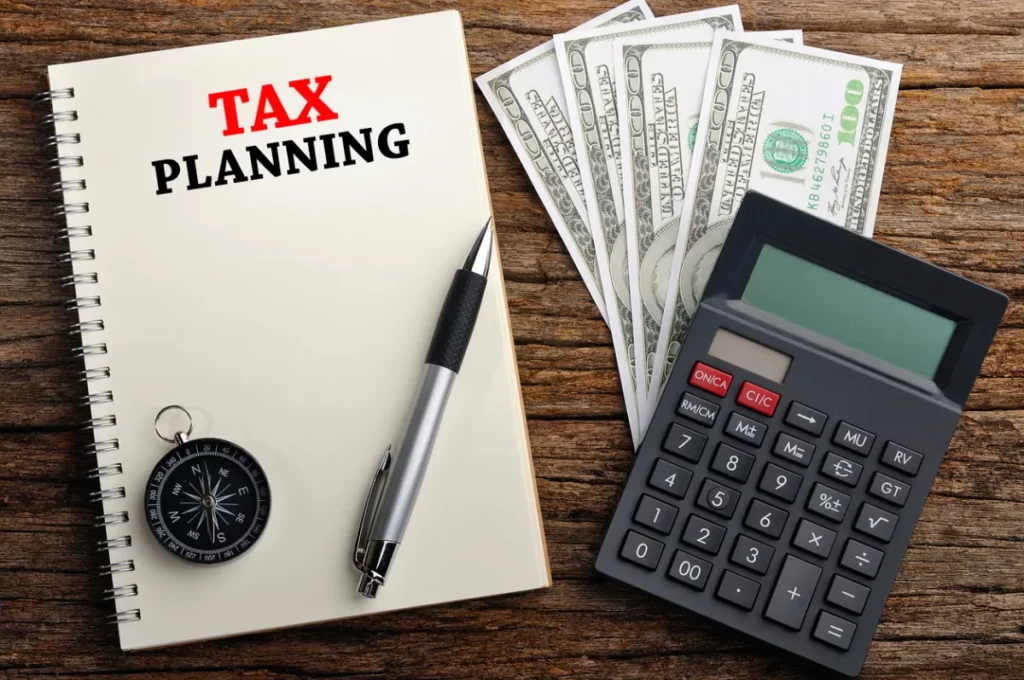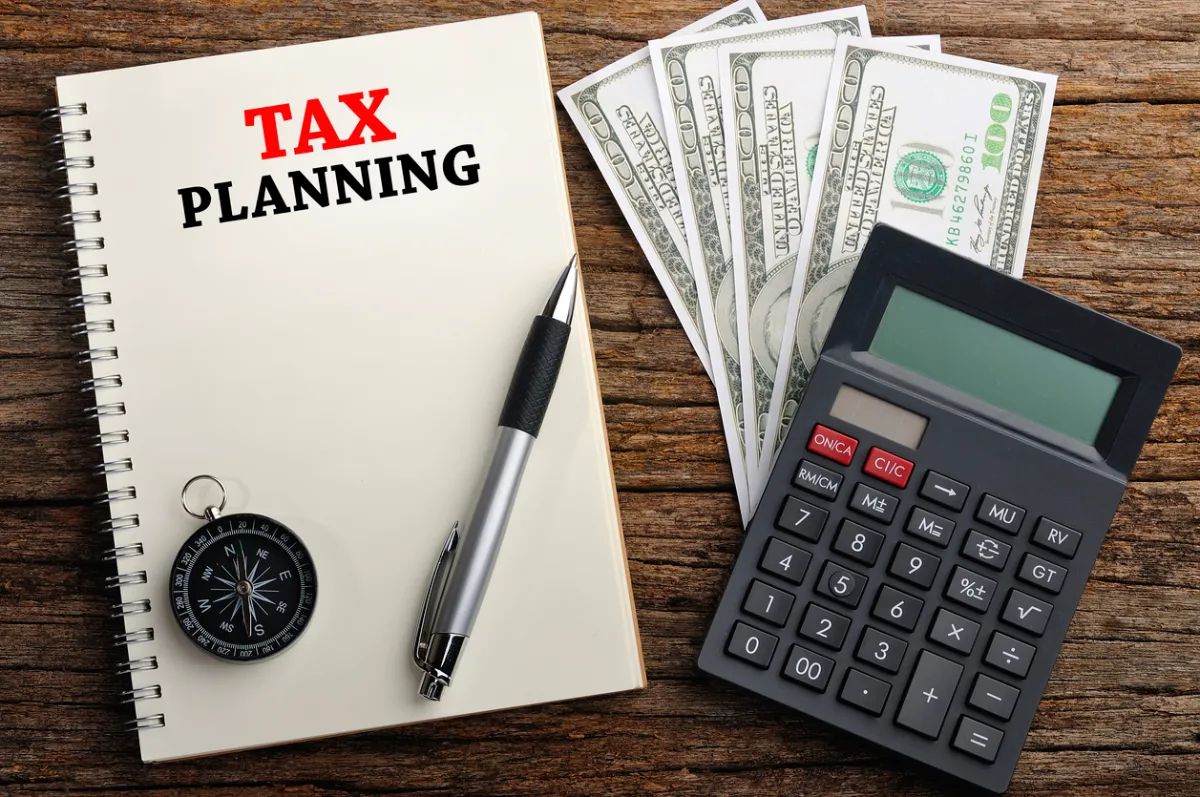
When it comes to managing your finances, one of the most impactful strategies is proactive tax planning. By taking a forward-thinking approach, you can minimize your tax liability, maximize deductions, and ensure compliance with ever-changing tax laws. Tax planning isn’t just about preparing for the April deadline—it’s about creating a year-round strategy that aligns with your financial goals. At Gildark Financial Solutions Group, we understand the importance of tailoring tax planning strategies to each client’s unique needs. In this blog, we’ll explore how early preparation can safeguard your wealth, enhance your bottom line, and help you stay ahead of the curve. Let’s dive into how proactive tax planning can make a difference for you and your financial future.
Taking a proactive approach to tax planning begins with understanding your current tax situation. By gaining clarity on how your income, deductions, and credits influence your tax liability, you can make informed decisions to reduce the amount you owe and maximize your financial benefits.
- Know Your Tax Bracket: Determining your tax bracket is a key first step in proactive planning. Your tax bracket dictates the rate at which your taxable income is taxed. By understanding where you fall, you can assess how different financial decisions—such as increasing income or utilizing deductions—might impact your overall tax bill.
- Tax Withholding and Estimated Payments: Another essential element is reviewing your tax withholding and estimated tax payments. If you’re self-employed, own a business, or have additional income streams, such as rental income, properly estimating and paying quarterly taxes can help you avoid underpayment penalties. On the flip side, adjusting your withholding might prevent you from overpaying and essentially giving the government an interest-free loan.
- Regular Tax Situation Reviews: Tax laws and your personal circumstances often change from year to year. Reviewing your tax situation regularly ensures that you’re up to date with the latest regulations and that you’re taking advantage of every available strategy. For instance, reviewing itemized deductions versus the standard deduction each year can make a significant impact on how much you save.
Understanding your tax situation not only helps you avoid penalties but also empowers you to take full control of your finances. With the right insights and tax accountant, you’ll uncover opportunities to protect your wealth and improve your bottom line.
Proactive tax planning is about being intentional with your financial decisions to minimize tax liabilities and maximize savings. By implementing effective strategies such as deferring or accelerating income, tax-loss harvesting, and bunching expenses, you can significantly reduce your tax burden and keep more money in your pocket.
Deferring Income
Deferring income is a powerful tax strategy, especially for individuals anticipating lower income and tax brackets in future years, such as during retirement. By delaying income recognition, you can shift taxable income from high-tax years to low-tax years, reducing your overall tax liability.
- Plan for Retirement: For high-income earners, deferring income into retirement can lead to substantial savings since retirement often comes with a lower tax rate. Utilize deferred compensation plans or contribute to tax-advantaged retirement accounts, like traditional IRAs or 401(k)s, to reduce your taxable income now while saving for the future.
- Maximize Tax Deductions and Credits: Deferring income also allows you to better align your earnings with deductions and credits, further lowering your tax burden in high-income years.
Accelerating Income
In certain situations, accelerating income may be a more beneficial approach, such as when tax rates are expected to increase in the future. By recognizing income sooner, you can lock in the current lower rates and reduce long-term tax exposure.
- Strategize for Changes in Tax Law: If you expect tax brackets or rates to rise, consider accelerating bonuses, sales commissions, or other forms of income to take advantage of the current lower rates.
- Plan for RMDs (Required Minimum Distributions): Once you turn 73, the IRS requires you to withdraw a specific amount from qualified retirement accounts annually. These withdrawals, known as Required Minimum Distributions (RMDs), are subject to income tax. Properly planning for RMDs ensures you withdraw the correct amount and avoid penalties while minimizing the overall tax impact.
Taking Required Minimum Distributions (RMDs)
When you reach age 73, managing RMDs is critical to avoiding costly penalties and excess taxes. To calculate your RMD:
- Refer to the IRS Uniform Lifetime Table, which provides a divisor based on your age.
- Divide your total retirement account balance (as of December 31 of the previous year) by the applicable divisor to determine your RMD.
Retirement can be a time when things like taxes on withdrawals from retirement accounts and investment earnings can add up. Without planning strategies, the additional income could add up to tens of thousands of dollars in extra taxation over time.
Tax-Loss Harvesting
Tax-loss harvesting is an essential strategy for investors looking to offset capital gains and reduce taxable income. This technique involves selling underperforming investments at a loss to counteract gains from profitable assets, effectively lowering your overall tax bill.
- Review Your Portfolio: At year-end, assess the performance of your investments to identify opportunities for tax-loss harvesting. Be strategic in selling assets with losses to offset gains while maintaining a balanced portfolio.
- Be Aware of Wash Sale Rules: To ensure compliance with IRS regulations, avoid repurchasing the same or substantially identical securities within 30 days before or after selling the asset.
Bunching
Bunching is a tax strategy designed to maximize itemized deductions by consolidating deductible expenses into a single tax year. This approach helps taxpayers exceed the standard deduction threshold, making it possible to claim more deductions.
- Plan Large Expenses: Combine deductible expenses such as medical bills, charitable contributions, or property taxes into one calendar year to surpass the standard deduction. For instance, prepaying next year’s property taxes or making additional charitable donations in one year can result in more significant savings.
- Understand Deduction Limits: Be aware of caps and limits on certain deductions, such as the medical expense deduction threshold, to ensure you’re maximizing the benefits of bunching.
By utilizing these proactive tax planning strategies, you can take control of your financial future and significantly reduce your tax burden. Each strategy requires careful financial planning, and attention to detail, so consult a tax professional to tailor these approaches to your unique financial situation.

Effective tax planning requires a deliberate and well-thought-out approach that integrates various strategies to minimize tax liability while maximizing financial and tax benefits elsewhere.
Develop a Comprehensive Tax Plan
Start by understanding your income, deductions, and credits. Incorporate multiple strategies to reduce taxable income, such as leveraging retirement account contributions, optimizing tax credits, and strategically timing income or deductions to fit your financial goals.
Accelerate or Defer Income
- Accelerating Income: If you’re in a lower tax bracket now than you expect to be in the future, accelerating income (e.g., bonuses or stock options) into the current year can lock in lower tax rates.
- Deferring Income: If your future tax rate is lower, deferring income—such as postponing year-end payments or contributions to taxable accounts—can minimize immediate tax burdens.
Use Tax-Efficient Withdrawal Strategies
Plan your withdrawals from taxable, tax-deferred, and tax-exempt accounts carefully to manage tax impacts. Consider prioritizing withdrawals from taxable accounts first while allowing tax-deferred accounts to grow. Utilize Roth IRAs strategically to avoid bumping into higher tax brackets during peak income years.
Coordinate Retirement Income and Taxable Accounts
When managing retirement income, factor in how Social Security benefits, investment income, and taxable distributions interact. Strategies like tax-loss harvesting and efficient bracket management can reduce your overall tax burden and prevent unnecessary penalties or taxes.
By aligning these strategies with your unique financial situation, you can achieve a tax plan that minimizes your tax liability and positions you for long-term financial success.
Proactive tax planning is a powerful tool that goes beyond just filing your taxes—it can have a profound impact on your financial success.
Significant Tax Savings
By implementing tax planning strategies, you can reduce your taxable income, maximize deductions, and take full advantage of tax credits. This proactive approach to tax season can significantly lower your overall tax burden and help you keep more of your hard-earned money.
Enhance Investment Returns
Tax-efficient investing, such as holding assets in tax-advantaged accounts or using tax-loss harvesting, can improve your investment performance by minimizing capital gains taxes and maximizing after-tax returns. These tax advice and strategies ensure that more of your investment earnings stay with you.
Achieve Financial Goals
Effective tax planning aligns your financial activities with your goals. Whether it’s saving for retirement, funding a major life event, or growing your wealth, a well-structured tax plan ensures you’re optimizing every financial move for maximum benefit.
Increase Tax-Free Income
One key benefit of tax planning is the ability to increase your tax-free income. For example, converting to a Roth IRA allows you to enjoy tax-free withdrawals in retirement, providing greater financial flexibility and reducing tax burdens during your golden years.
By planning ahead, you can unlock these benefits and position yourself for a more secure and prosperous financial future.
Integrating tax planning with your investment strategy is essential for building and preserving wealth. By understanding the tax implications of your financial decisions, you can maximize returns and minimize unnecessary tax burdens.
Tax-Efficient Investments
Choosing tax-efficient investments, such as municipal bonds or tax-advantaged retirement accounts, can help reduce your overall tax liability. These options allow you to grow your wealth while minimizing taxes on interest, dividends, and capital gains.
Strategic Investment Planning
Using mutual funds, exchange-traded funds (ETFs), and other diversified investment vehicles can optimize your investment portfolio for both growth and tax efficiency. Tax-loss harvesting and holding investments long-term to benefit from lower capital gains rates are also key strategies.
Comprehensive Wealth Planning
Developing a wealth strategy that balances investment growth with proactive tax planning ensures a holistic approach to achieving financial stability. Incorporating tax-efficient withdrawals, estate planning, and charitable contributions can further support your goals.
Work with a Professional
A financial, registered investment advisor or tax professional can provide tailored advice to align your wealth plan with your personal and financial objectives. Partnering with experts ensures you’re making informed decisions that maximize your wealth while minimizing tax exposure.
By combining tax planning with smart investment strategies, you can safeguard your assets and create a sustainable financial future.
With our help, you’ll learn to keep accurate and detailed records of your tax-related documents and financial information.
When you consider working with a Gildark Financial advisor to develop a tax plan and provide guidance on tax planning strategies, you will also stay informed about changes to tax laws and regulations that may affect your tax situation and use proper tax planning to ensure you’re taking advantage of all available tax savings opportunities.
Visit our Tax Planning Services page to learn more, or schedule your own financial professional consultation today. Let’s work together to build a tax strategy that benefits your bottom line.



